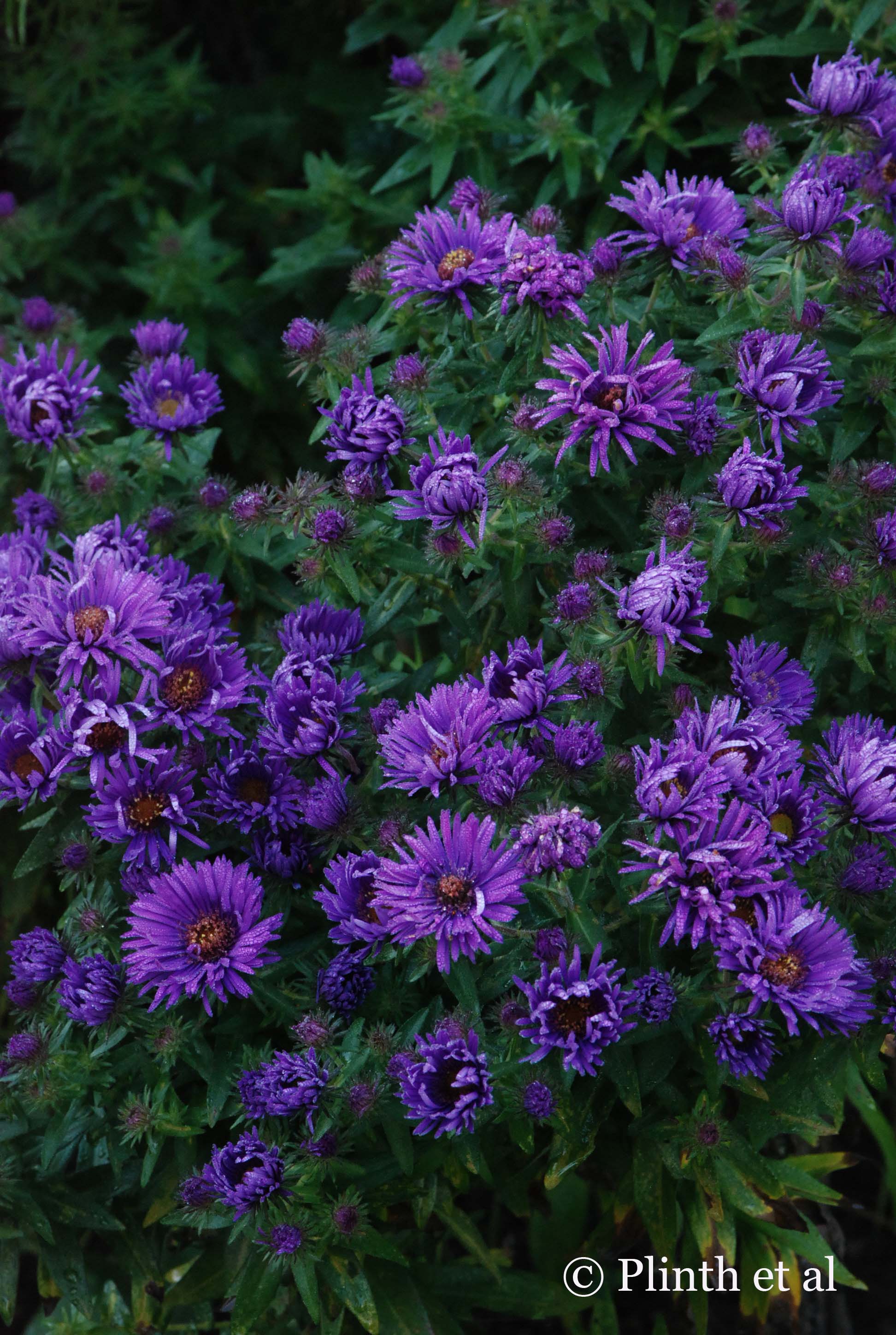Autumn Wildflower Muses
Dear Jimmy,
How are you? I hope that you're well and are enjoying what Gravetye offers as its last seasonal hurrah - the bounty of the walled kitchen garden, the borders bustling with dahlias, grasses, asters, the misty landscapes. It is the same here at Chanticleer. Looking for a respite away from the city and its suburbs, I accepted an invitation to spend the weekend at a friends' Poconos retreat. The last time I visited, it was summer and we had an evening campfire after a day of cooking and swimming. Although autumn had not made its official start, the night was chilly, motivating us to lit the fireplace for toasty temperatures. The sumach (Rhus typhina) had already turned aflame and traces of red appeared on the red maple (Acer rubrum). At the farmers' market, I bought decorative gourds and apples while trying to resist cider donuts. It would be the last week for stone fruit and tomatoes. On the drive back, we saw that the fields were already colorful from autumn wildflowers. It occured to me that some of them have been muses for early 19th century American writers.
Grows a weed
More richly here besides our melllow seas
That is autumn's harbringer and pride...
The goldenrod upon a thousand hills
This is the autumn's flower, and to my soul
A token fresh of beauty and life
by Richard Watson Gilder
Goldenrods were at their best, making me wonder briefly why they haven't gained acceptance in contemporary naturalistic plantings. It's a shame that their thuggish tendencies in the garden lead to their exclusion, but for good reasons. I once grew Solidago rugosa 'Fireworks' with Sedum 'Matrona', Panicum virgatum 'Shenandoah', and Aster oblongifolius 'Raydon's Favorite' until I had to remove it from spreading into other plants. Pulling any goldenrod needs a good dose of strength - their roots run untrammeled and deep! Now I'm happy to see them brilliantly golden and buzzing with insects in open meadows.
The GENTIAN weaves her fringes,
The maple's loom is red.
My departing blossoms
Obviate parade
by Emily Dickinson
Under flawless blue skies, we pulled over by the roadside to admire up-close the colonies of the fringed gentian (Gentianopsis crinita). I remembered seeing this gentian in upstate New York when my naturalist friend and I drove to a wildflower preserve where the flowers lit up the tawny meadow like sapphires. Individual plants are short-lived, growing only a year or two, but will reseed if happy and given the right conditions. The fringed gentian is somewhat particular in its habitat requirements, preferring shallow, magnesium-rich soils in moist sunny meadows, and strangely has found disturbed roadsides to its liking. It's amazing how a rather nondescript plant can abide its time for a year and wait the following year until late summer to mid-autumn to flower. Once those 1 1/2" to 2" flowers reveal their fringed and spreading tubular flowers, the long wait is forgotten. Blue flowers always carry that rarified air and the fringed gentian's specific needs remind me of how we labor to grow blue poppies or delphiniums well. In this case we need not to toil for the flowers, enjoying them as the 19th century writers William Cullen Bryant, Emily Dickinson, and Henry David Thoreau did once on a blue sunny autumn day. It seems a bit melancholy to discover how rare the fringed gentian are due to habitat loss.
Born to the purplest purple, deep, intense,
Mocking the gentian's fringe with hue more rare,
New England Aster! - What can be more fair! -
Child of the ripe year's calm, serene, suspense,
Star of September's glory! say, O whence,
'Mid golden-rod, and golden sunflower's blaze,
Comes the deep tone of those cyanic rays,
For long-lost violet more than recompense?
by George Lansing Taylor
New England asters (Aster novae-angliae) were flowering as well, their regal purples a foil to the goldenrods and grasses. I can't be without asters now. They can be forgiven for their tatty mildewed leaves and splayed centers in exchange for their late seasonal flowers. The Europeans have a better appreciation for our asters - have a look at the Autumn Garden at Le Jardin de Plume where asters are like cloudscapes from which grasses, Persicaria orientalis, and bugbanes (Actaea) fly forth. It's interesting to observe how lanky the unadulterated New England aster is since breeding clearly has shortened the stems, making for a fuller dome shape. However, I find its wild lankness in the open fields a visual advantage for towering over neighboring plants. Having said that, I used to look carefully in search of variants worth introducing, a rather fruitless endeavor if you consider the New England aster's European education!
I find it comforting to see the same wildflowers that were muses to our country's early writers, especially in the apocalyptic sounding times of climate change.
On a last note, do you know Franklinia alatamaha? At my friends' Philadelphia garden, it was covered with white flowers that always evoke camellias or stewartias, both of which share the same family Theaceace. The seed capsules have a curious zig zag shape worthy of a jewelry design. Up north in the Boston area, the leaves turn scarlet at the same time as the flowers. I have not seen this tree in the British Isles, which may not have the summer heat for growth. Franklinia has a storied history linked to Philadelphia as the Philadelphian botanists John Bartram and his son William discovered it along the banks of the Altamaha River in Georgia. Shortly after the Bartrams introduced the tree to cultivation, Franklinia was never rediscovered despite a second sighting in the 1770s. Sadly its extinction in the wild meant no posthumous eulogies spun by our writers even if its fame as the 'lost camellia' prevented its obscurity.
Take care, Eric







